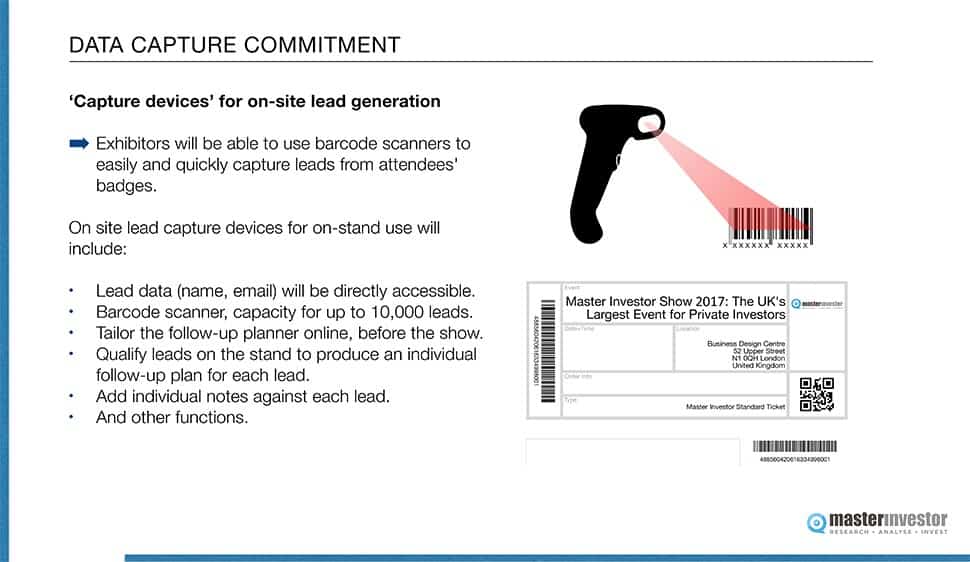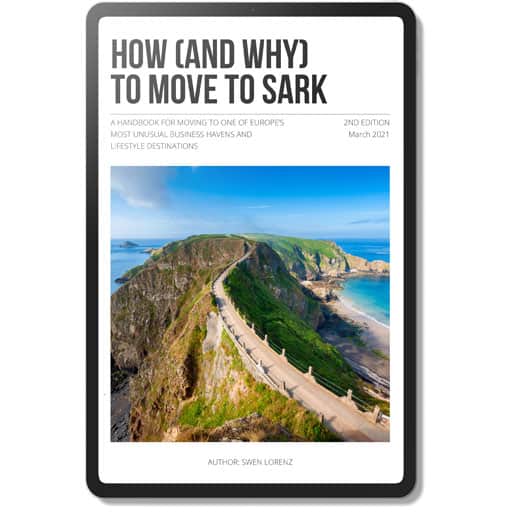This article might teach you a new trick or two if your company:
- Is lacking major clients;
- Does not yet have the public profile required for succeeding on a big scale;
- Finds it challenging to break into a new market.
Back in 2015, I accepted a mandate to turn around a business that hosts events for private investors.
The annual Master Investor Show had been created in 2002, to provide a platform where private individuals with an interest in investing could meet companies that they can invest into.
The event had become a regular feature of London’s finance industry. It always took place on Saturday, with a crowd of then around 1,500 to 2,000 people flocking to the Business Design Centre in the centrally located Islington district.
Sadly, in 2013, following some difficult years, disaster struck.
Digging your way out of a hole
Under its previous management, for reasons that aren’t going to be the subject of this article, the company operating the Master Investor Show had to file for insolvency.
When I stepped in as director, the salvageable part of the assets had already been shifted to a new company. A strong funder, the well-known financier and book author Jim Mellon, had taken full control. Jim shoved the company my way and said, “Do something with it.”
Aiming to engineer a fresh start for the company, I analysed what was missing to take the company forward.
Here was an event that:
- Had no sponsors at all. Never mind having reputable, world-class sponsors.
- Had a management and operating structure based on what worked back in the early 2000s. It was all boring, conventional, and entirely ineffective.
- Just about covered its direct costs, but not the company’s staffing, through the overall income it generated. The company was *bleeding* money.
Obviously, something drastic had to happen.
Fast forward to 2017

I am writing this article shortly after a major press release went out.
Master Investor Ltd. has announced that Fidelity International, the world’s 4th largest mutual fund manager and one of the most trusted names in fund management, has signed up as Platinum Sponsor for the upcoming Master Investor Show on March 17th, 2018 for the second year running. Fidelity is now a return customer.
How did we do it, and which lessons might you be able to apply for your own business?
The following three conclusions probably apply to many other businesses.
1: Use storytelling and content marketing to make them come to you
When I joined Master Investor, it employed three sales people. Actually, there were more than that. But in amidst a plethora of disconnected products and the hotchpotch of employees and freelancers without clear roles, I’d say there was the equivalent of three full-time positions tasked with selling the event to exhibitors, speakers and sponsors. One of the techniques they applied was to cold-call potential clients.
I made them all redundant.
Subsequently, I did have a few freelancers involved with selling some of the event spaces. That ended up contributing about 30% of the once again growing event sales.
All the other sales I made happen myself. Or to be more precise, I leveraged the power of the Internet to reach new customers and convince them to sign up.
The magic bullet I fired off to make it all happen, was content marketing.
Instead of calling, chasing, cajoling and begging companies to sign up, we put out content that showed what an effective and fun show we were hosting.
We flooded the ether. Below are some of the tactics used:
- Personalised E-letters to suitable lists, telling the story of the event’s heritage.
- Articles in a newly created e-magazine we published every month.
- Interviews published in other publications.
- 2-minute videos that summarised the show in a dynamic, professional way.
What this strategy led to was potential customers, feeling both informed and excited by what they read about us, started to come to us.
Instead of trying to get through to the right people and convincing them of our product, we simply focused on getting our message out there and having get people interested.
It didn’t take long and the phone started ringing (although actually, it’s now more often emails coming in as hardly anyone uses phones anymore).
The magic bullet I fired off to make it all happen, was content marketing.
In my estimation, it is about ten times easier to sell a product to someone who is inquiring about it, than to someone you are approaching cold. Maybe that figure is too conservative. It could be 50 times or 100 times easier!
That’s where the above-mentioned Platinum Sponsor announcement comes in. Fidelity International came to us, rather than the other way around. They were exploring new marketing channels such as events, and through our content marketing, we appeared on their radar screen!
Without good story-telling and our message being carried out to a broad audience thanks to using multiple channels for communicating it, Master Investor wouldn’t have won them as clients.
Nor would it have worked, had there not been some 3rd party endorsement. Who wants to rely purely on the messages given off by a company that has something to sell? Exactly! Our content attracted other content creators, such as a freelance journalist from Finbuzz, who published a flattering story after actually visiting one of our shows.
Content is a powerful tool. If it’s good content, then it almost inevitably travels further than you think it will. It stays around for years to come, given that it keeps popping up on search engines. If you are lucky enough to get some content from external parties, then you immediately have influential endorsements working to your favour.
“Sales staff”? I’d never employ a salesperson in the conventional sense for an events company. I’ll get content creators, relationship managers, business development staff. People who have not just IQ but also EQ (= emotional intelligence). They need backing up with cold, hard metrics about the value of the product they are going to deal with, but they sure shouldn’t engage in conventional kind of sales techniques. Who wants to be sold to by a sales person? Yikes! Remember, that had brought the company down in the first place.
Content is a powerful tool. If it’s good content, then it almost inevitably travels further than you think it will.
By year two of our new approach, revenue was up over 100%, and it happened without any full-time sales staff! By year three, revenue had almost tripled, and with a much stronger operation behind it. Going forward, the company will grow yet more.
2: Adaptable collateral
When you get an enquiry, you have a chance (and one chance only) to not only impress your prospective client but to hit them while they are hot.
Two aspects have been true for virtually every customer enquiry at Master Investor:
- Everyone wants a bespoke solution. There is hardly such a thing as a standard product anymore. Personalisation is key.
- Everyone wants to get all the answers NOW.
At the same time, no one has the time or patience anymore to read through lengthy brochures.
Which is why we invested a fair amount of time into developing a Keynote format (i.e. bullet points and slides) document with about 50 stock slides that outline our offering.
If someone approaches us about our products nowadays, we can pick and mix from our stock of slides to create a bespoke document focused on the product features they are likely to be interested in (but not the others); in an easily digestible format; and with relevant, pleasant illustrations and photos to back it all up.

We work hard to make everything as easy and quick for our clients as possible. This has to start with the proposal process!
Make it easy for prospective clients, and make sure that everything you deliver to them is in the format that is most likely to work for them.
3: Treat your existing clients like the VIPs they are
Finding new clients is not just difficult, it’s also expensive. It requires staff time to find them or make them find you; there is the time required to come to an agreement with them; and inevitably you also need to educate them about your product and how to best to use it.
If you start over with an entirely new set of clients every year, it means you are wasting an extraordinary amount of resources. You’ll be forever in a treadmill of trying to win new clients to survive.
Or as the Harvard Business Review once wrote in an article about the subject: “Depending on which study you believe, and what industry you’re in, acquiring a new customer is anywhere from five to 25 times more expensive than retaining an existing one.”
What’s much easier, is to keep existing clients so happy, that they come back for more.
Once you sign up a client for repeat business, you’ll find there is:
- Less time spent on negotiating a package.
- Less time spent on working out the contract and other operational details.
- Less time spent to get to a signature underneath the contract.
On the other hand you’ll find:
- There is more time available to focus on both parties working together for the best possible outcome.
- More joy on both sides about working together with people who have become friends in the meantime.
Winning repeat customers is probably one of the most powerful business development tools out there. Incidentally, it’s one that investors, too, are looking out for. If you check back to my article about the investment criteria of the early-stage funder, JamJar Investments, you’ll see that they rate it highly if a business has already shown it can get clients to come back for more.
How to best get there?
In our company, we decided that it’s worthwhile to have a dedicated staff position for doing nothing but looking after existing major clients.
I created a position that we call the “Partnership Manager”.
Our major clients are indeed just that, “Partners”. They are a vital part of what we do and we see them as much more than just regular paying clients.
I added “Manager” to the job title to get across that we have someone who is empowered to make decisions aimed at developing our relationship with these partners. This is not a junior position, but one where a staff member is being given the tools and the decision-making power to make sure our partners’ interests are constantly looked after and taken care of on our side.
In short, we aim to over-deliver! Which you can’t do without someone being in charge of doing so.
To add to this, not only do you get the benefit of the repeat customer but the fact that they are returning can be used as a strong testimonial and win new clients through referrals.
I elevated an existing staff member to that position. The rationale behind giving existing staff member an opportunity to grow professionally and advance within the same company is a story for another day.
You can do it
At times, I feel like this blog is simply about me writing down a few common sense techniques.
I wasn’t trained in management, marketing, sales or any such area. I am just a university drop-out who tries to take a cold, hard look at something and then come up with a common sense approach toward advancing things.
Although what probably sets me apart, is that I work harder and longer than others.
The sales staff I laid off? Nothing would have stopped them from creating content, developing and trying out new pitch material, or asking their employer for other tools to work with.
If a company employs people who are jobsworth minions instead of passionate, self-motivated and communicative individuals, then you’ll inevitably be stuck with the old way of doing things. It never fails to fascinate me how many people are stuck in a job that provides them with a certain amount of comfort and pay, but who don’t advance and then inevitably times overtake them, and they end up on the redundancy list for one reason or another.
Don’t be that person, and don’t be that company. Experiment, fail, improve. Stick to common sense and simple solutions. Look after the people who have been good to you, and the upside will take care of itself.
It boils down to this
In summary, in order to win major clients and build their relationship to encourage repeat business:
- Have a story to tell and find ways to share it with your target customers
- Always personalise your approach
- Invest in building your relationship with your clients, and keep staff who are good relationship builders.
Always remember that companies exist for one reason and one reason only: To make their customers happy, at every step of the journey.
If you enjoyed this article, you might also be interested in the following articles:
Want to print this article? Open a printer friendly version.
Did you find this article useful and enjoyable? If you want to read my next articles right when they come out, please sign up to my email list.
Share this post:


